Then I saw an angel come down from heaven, holding in his hand the key to the abyss and a heavy chain. He seized the dragon, the ancient serpent, which is the Devil or Satan, and tied it up for a thousand years and threw it into the abyss, which he locked over it and sealed, so that it could no longer lead the nations astray until the thousand years are completed. After this, it is to be released for a short time.
Then I saw thrones; those who sat on them were entrusted with judgment. I also saw the souls of those who had been beheaded for their witness to Jesus and for the word of God, and who had not worshiped the beast or its image nor had accepted its mark on their foreheads or hands. They came to life and they reigned with Christ for a thousand years. (Rev 20:1-4, Friday’s first Mass reading)
There is, perhaps, no Scripture more widely interpreted, more eagerly contested and even divisive, than this passage from the Book of Revelation. In the early Church, Jewish converts believed that the “thousand years” referred to Jesus coming again to literally reign on earth and establish a political kingdom amidst carnal banquets and festivity.[1]“…who then rise again shall enjoy the leisure of immoderate carnal banquets, furnished with an amount of meat and drink such as not only to shock the feeling of the temperate, but even to surpass the measure of credulity itself.” (St. Augustine, City of God, Bk. XX, Ch. 7) However, the Church Fathers quickly kiboshed that expectation, declaring it a heresy — what we call today millenarianism [2]see Millenarianism — What it is and is Not and How the Era was Lost.
Those who do take [Rev 20:1-6] literally and believe that Jesus will come to reign upon earth for a thousand years before the end of the world are called millenarists. —Leo J. Trese, The Faith Explained, p. 153-154, Sinag-Tala Publishers, Inc. (with the Nihil Obstat and Imprimatur)
Thus, the Catechism of the Catholic Church declares:
The Antichrist’s deception already begins to take shape in the world every time the claim is made to realize within history that messianic hope which can only be realized beyond history through the eschatological judgment. The Church has rejected even modified forms of this falsification of the kingdom to come under the name of millenarianism (577), especially the “intrinsically perverse” political form of a secular messianism. —n. 676
Footnote 577 above leads us to Denzinger-Schonnmetzer’s work (Enchiridion Symbolorum, definitionum et declarationum de rebus fidei et morum,) which traces the development of doctrine and dogma in the Catholic Church from its earliest times:
…the system of mitigated Millenarianism, which teaches, for example, that Christ the Lord before the final judgment, whether or not preceded by the resurrection of the many just, will come visibly to rule over this world. The answer is: The system of mitigated Millenarianism cannot be taught safely. —DS 2269/3839, Decree of the Holy Office, July 21, 1944
In summary, Jesus is not coming again to reign on earth in His flesh.
But according to the testimony of a century of popes and confirmed in numerous approved private revelations,[3]cf. Era of Divine Love Jesus is coming to fulfill the words of the “Our Father” in that His Kingdom, already begun and present in the Catholic Church,[4]CCC, n. 865, 860; “The Catholic Church, which is the kingdom of Christ on earth, [is] destined to be spread among all men and all nations…” (POPE PIUS XI, Quas Primas, Encyclical, n. 12, Dec. 11th, 1925; cf. Matt 24:14) will indeed “reign on earth as it is in Heaven.”
Hence it follows that to restore all things in Christ and to lead men back to submission to God is one and the same aim. —POPE ST. PIUS X, E Supremi, n. 8
According to St. John Paul II, this coming reign of the Divine Will in the interior of the Church is a new form of sanctity unknown until now:[5]“Have you seen what living in My Will is?… It is to enjoy, while remaining on earth, all the Divine qualities… It is the Sanctity not yet known, and which I will make known, which will set in place the last ornament, the most beautiful and most brilliant among all the other sanctities, and that will be the crown and completion of all other sanctities.” (Jesus to Servant of God Luisa Picarretta, The Gift of Living in the Divine Will, n. 4.1.2.1.1 A)
God himself had provided to bring about that “new and divine” holiness with which the Holy Spirit wishes to enrich Christians at the dawn of the third millennium, in order to “make Christ the heart of the world.” —POPE JOHN PAUL II, Address to the Rogationist Fathers, n. 6, www.vatican.va
In that regard, it is precisely the tribulations of the Church in this present Great Storm that humanity is passing through that will serve to purify the Bride of Christ:
Let us rejoice and be glad and give Him glory. For the wedding day of the Lamb has come, His bride has made herself ready. She was allowed to wear a bright, clean linen garment… that He might present to Himself the Church in splendor, without spot or wrinkle or any such thing, that she might be holy and without blemish. (Rev 19:7-8, Ephesians 5:27)
What is the “thousand years”?
Today, there are many opinions on what exactly this millennium is that St. John refers to. What is crucial to the student of Scripture, however, is that interpretation of the Bible is not a subjective matter. It was at the councils of Carthage (393, 397, 419 AD) and Hippo (393 AD) where the “canon” or books of the Bible, as we Catholics preserve them today, was established by the successors to the Apostles. Therefore, it is to the Church that we look for the Bible’s interpretation, she who is the “pillar and foundation of truth.”[6]1 Tim 3:15
In particular, we look to the Early Church Fathers who were the first to both receive and carefully develop the “deposit of Faith” passed on from Christ to the Apostles.
… if some new question should arise on which no such decision has been given, they should then have recourse to the opinions of the holy Fathers, of those at least, who, each in his own time and place, remaining in the unity of communion and of the faith, were accepted as approved masters; and whatsoever these may be found to have held, with one mind and with one consent, this ought to be accounted the true and Catholic doctrine of the Church, without any doubt or scruple. —St. Vincent of Lerins, Commonitory of 434 A.D., “For the Antiquity and Universality of the Catholic Faith Against the Profane Novelties of All Heresies”, Ch. 29, n. 77
The Early Church Fathers were nearly unanimous that the “thousand years” referred to by St. John was a reference to the “day of the Lord”.[7]2 Thess 2:2 However, they did not interpret this number literally:
…we understand that a period of one thousand years is indicated in symbolic language… A man among us named John, one of Christ’s Apostles, received and foretold that the followers of Christ would dwell in Jerusalem for a thousand years, and that afterwards the universal and, in short, everlasting resurrection and judgment would take place. —St. Justin Martyr, Dialogue with Trypho, The Fathers of the Church, Christian Heritage
Hence:
Behold, the Day of the Lord shall be a thousand years. —Letter of Barnabas, The Fathers of the Church, Ch. 15
Their cue was not only from St. John but St. Peter, the first pope:
Do not ignore this one fact, beloved, that with the Lord one day is like a thousand years and a thousand years like one day. (2 Peter 3:8)
Church Father Lactantius expounded that the Day of the Lord, though not a 24-hour day, is represented by it:
…this day of ours, which is bounded by the rising and the setting of the sun, is a representation of that great day to which the circuit of a thousand years affixes its limits. —Lactantius, Fathers of the Church: The Divine Institutes, Book VII, Chapter 14, Catholic Encyclopedia; www.newadvent.org
Thus, following the straightforward chronology of St. John in Revelation chapters 19 and 20, they believed that the Day of the Lord:
• begins in the darkness of vigil (a period of lawlessness and apostasy) [cf. 2 Thess 2:1-3]
• crescendoes in darkness (the appearance of the “lawless one” or “Antichrist”) [cf. 2 Thess 2:3-7; Rev 13]
• is followed by the break of dawn (the chaining of Satan and death of Antichrist) [cf. 2 Thess 2:8; Rev 19:20; Rev 20:1-3]
• is followed by noon-time (an era of peace) [cf. Rev 20:4-6]
• until the setting of the sun on time and history (the rise of Gog and Magog and a final assault on the Church) [Rev 20:7-9] when Satan is cast into Hell where the Antichrist (beast) and false prophet had been during the “thousand years” [Rev 20:10].
That last point is significant. The reason is that you will hear many Evangelical and Catholic preachers today claim that the Antichrist appears at the end of time. But a clear reading of St. John’s Apocalypse says otherwise — and so did the Church Fathers:
But when The Antichrist shall have devastated all things in this world, he will reign for three years and six months, and sit in the temple at Jerusalem; and then the Lord will come from Heaven in the clouds… sending this man and those who follow him into the lake of fire; but bringing in for the righteous the times of the kingdom, that is, the rest, the hallowed seventh day… These are to take place in the times of the kingdom, that is, upon the seventh day… the true Sabbath of the righteous. —St. Irenaeus of Lyons, Church Father (140–202 A.D.); Adversus Haereses, Irenaeus of Lyons, V.33.3.4,The Fathers of the Church, CIMA Publishing Co.
He shall strike the ruthless with the rod of his mouth, and with the breath of his lips he shall slay the wicked… Then the wolf shall be a guest of the lamb, and the leopard shall lie down with the young goat… They shall not harm or destroy on all my holy mountain; for the earth shall be filled with knowledge of the Lord, as water covers the sea. (Isaiah 11:4-9; cf Rev 19:15 )
I and every other orthodox Christian feel certain that there will be a resurrection of the flesh followed by a thousand years in a rebuilt, embellished, and enlarged city of Jerusalem, as was announced by the Prophets Ezekiel, Isaias and others… —St. Justin Martyr,Dialogue with Trypho, Ch. 81, The Fathers of the Church, Christian Heritage
Note, the Church Fathers simultaneously referred to the “thousand years” as both the “Day of the Lord” and a “sabbath rest.” They based this from the narrative of creation in Genesis when God rested on the seventh day…[8]Gen 2:2
…as if it were a fit thing that the saints should thus enjoy a kind of Sabbath-rest during that period [of a “thousand years”]… And this opinion would not be objectionable, if it were believed that the joys of the saints, in that Sabbath, shall be spiritual, and consequent on the presence of God… —St. Augustine of Hippo (354-430 A.D.; Church Doctor), De Civitate Dei, Bk. XX, Ch. 7, Catholic University of America Press
Therefore, a sabbath rest still remains for the people of God. (Hebrews 4:9)
In the Letter of Barnabas by a second-century apostolic Father, it teaches:
…His Son will come and destroy the time of the lawless one and judge the godless, and change the sun and the moon and the stars—then He shall indeed rest on the seventh day… after giving rest to all things, I will make the beginning of the eighth day, that is, the beginning of another world. —Letter of Barnabas (70-79 A.D.), written by a second century Apostolic Father
Here, too, in approved prophetic revelation, we hear Our Lord confirming this chronology of St. John and the Church Fathers:
My ideal in Creation was the Kingdom of my Will in the soul of the creature; my primary purpose was to make of man the image of the Divine Trinity by virtue of the fulfillment of my Will upon him. But as man withdrew from It, I lost my Kingdom in him, and for as long as 6000 years I had to sustain a long battle. —Jesus to Servant of God Luisa Piccarreta, from Luisa’s diaries, Vol. XIX, June 20th, 1926
Hence, there you have the most clear and unbroken thread from both St. John’s revelations, to their development in the Church Fathers, to private revelation that — before the end of the world — there will be a “seventh day” of rest, a “resurrection” of the Church after the period of Antichrist.
St. Thomas and St. John Chrysostom explain the words quem Dominus Jesus destruet illustratione adventus sui (“whom the Lord Jesus will destroy with the brightness of His coming”) in the sense that Christ will strike the Antichrist by dazzling him with a brightness that will be like an omen and sign of His Second Coming… The most authoritative view, and the one that appears to be most in harmony with Holy Scripture, is that, after the fall of the Antichrist, the Catholic Church will once again enter upon a period of prosperity and triumph. —The End of the Present World and the Mysteries of the Future Life, Fr. Charles Arminjon (1824-1885), p. 56-57; Sophia Institute Press
…[the Church] will follow her Lord in his death and Resurrection. —Catechism of the Catholic Church, 677
What is the “first resurrection”?
But what exactly is this “first resurrection.” The renowned Cardinal Jean Daniélou (1905-1974) wrote:
The essential affirmation is of an intermediate stage in which the risen saints are still on earth and have not yet entered their final stage, for this is one of the aspects of the mystery of the last days which has yet to be revealed. —A History of Early Christian Doctrine Before the Council of Nicea, 1964, p. 377
However, if the purpose of the Era of Peace and “thousand years” is to re-establish the original harmony of creation[9]“Thus is the full action of the original plan of the Creator delineated: a creation in which God and man, man and woman, humanity and nature are in harmony, in dialogue, in communion. This plan, upset by sin, was taken up in a more wondrous way by Christ, Who is carrying it out mysteriously but effectively in the present reality, in the expectation of bringing it to fulfillment…” (POPE JOHN PAUL II, General Audience, February 14, 2001) by bringing the creature back into “living in the Divine Will” so that “man may return to his original state of creation, to his origin, and to the purpose for which he was created,”[10]Jesus to Luisa Piccarreta, June 3, 1925, Vol. 17 then I believe Jesus, Himself, may have unlocked the mystery of this passage to Servant of God Luisa Piccarreta.[11]cf. The Resurrection of the Church But first, let us understand that this “first resurrection” — though it may have a physical aspect, just as there were physical risings from the dead at the time of Christ’s own Resurrection[12]see The Coming Resurrection — it is primarily spiritual in nature:
The resurrection of the dead expected at the end of time already receives its first, decisive realization in spiritual resurrection, the primary objective of the work of salvation. It consists in the new life given by the risen Christ as the fruit of his redemptive work. —POPE ST. JOHN PAUL II, General Audience, April 22nd, 1998; vatican.va
Said Thomas Aquinas…
…these words are to be understood otherwise, namely of the ‘spiritual’ resurrection, whereby men shall rise again from their sins to the gift of grace: while the second resurrection is of bodies. The reign of Christ denotes the Church wherein not only martyrs, but also the other elect reign, the part denoting the whole; or they reign with Christ in glory as regards all, special mention being made of the martyrs, because they especially reign after death who fought for the truth, even unto death. —Summa Theologica, Qu. 77, art. 1, rep. 4
Hence, the fulfillment of the “Our Father” appears to tie into the “first resurrection” referred to by St. John in that it inaugurates the reign of Jesus in a new modality in the interior life of His Church: the “Kingdom of the Divine Will”:[13]“Now, I say this: if man does not turn back in order to take my Will as life, as rule and as food, to be purified, ennobled, divinized, to place himself in the prime Act of Creation, and take my Will as his inheritance, assigned to him by God – the very Works of Redemption and of Sanctification will not have their abundant effects. So, everything is in my Will – if man takes It, he takes everything.” (Jesus to Luisa, June 3, 1925 Vol. 17
Now, my Resurrection is the symbol of the souls who will form their Sanctity in my Will. —Jesus to Luisa, April 15th, 1919, Vol. 12
…the Kingdom of God means Christ himself, whom we daily desire to come, and whose coming we wish to be manifested quickly to us. For as He is our resurrection, since in him we rise, so He can also be understood as the Kingdom of God, for in Him we shall reign. —Catechism of the Catholic Church, n. 2816
There, I believe, you have the theology of the “thousand years” in a nutshell. Jesus continues:
…my Resurrection symbolizes the Saints of the living in my Will — and this with reason, since each act, word, step, etc. done in my Will is a Divine resurrection that the soul receives; it is a mark of glory that she receives; it is to go out of herself in order to enter the Divinity, and to love, work and think, hiding herself in the refulgent Sun of my Volition… —Jesus to Luisa, April 15th, 1919, Vol. 12
Pope Pius XII, in fact, prophesied of the resurrection of Church within the period of time and history that would see an end of mortal sin, at least in those disposed to the Gift of Living in the Divine Will.[14]cf. The Gift Here, there is a clear echo of Lactantius’s symbolic description of the Day of the Lord as following the “rising and setting of the sun”:
But even this night in the world shows clear signs of a dawn that will come, of a new day receiving the kiss of a new and more resplendent sun… A new resurrection of Jesus is necessary: a true resurrection, which admits no more lordship of death… In individuals, Christ must destroy the night of mortal sin with the dawn of grace regained. In families, the night of indifference and coolness must give way to the sun of love. In factories, in cities, in nations, in lands of misunderstanding and hatred the night must grow bright as the day, nox sicut dies illuminabitur, and strife will cease and there will be peace. —POPE PIUX XII, Urbi et Orbi address,March 2nd, 1957; vatican.va
Jesus says to Luisa that, indeed, this resurrection is not at the end of days but within time, when a soul begins to live in the Divine Will.
My daughter, in My Resurrection, souls received the rightful claims to rise again in Me to new life. It was the confirmation and seal of My entire life, of My works and of My words. If I came to earth it was to enable each and every soul to possess My Resurrection as their own – to give them life and make them resurrect in My own Resurrection. And do you wish to know when the real resurrection of the soul occurs? Not in the end of days, but while it is still alive on earth. One who lives in My Will resurrects to the light and says: ‘My night is over’… Therefore, the soul who lives in my Will can say, as the angel said to the holy women on the way to the sepulcher, ‘He is risen. He is not here anymore.’ Such a soul who lives in My Will can also say, ‘My will is no longer mine, for it has resurrected in God’s Fiat.’ —April 20, 1938, Vol. 36
With this triumphant act, Jesus sealed the reality that He was [in his one divine Person both] Man and God, and with his Resurrection He confirmed his doctrine, his miracles, the life of the Sacraments and the entire life of the Church. Moreover, He obtained the triumph over the human will of all souls that are weakened and almost dead to any true good, so that the life of the Divine Will that was to bring the fullness of holiness and all blessings to souls should triumph over them. —Our Lady to Luisa, The Virgin in the Kingdom of the Divine Will, Day 28
In other words, Jesus must now complete in us what He accomplished through His Incarnation and Redemption:
For the mysteries of Jesus are not yet completely perfected and fulfilled. They are complete, indeed, in the person of Jesus, but not in us, who are His members, nor in the Church, which is His mystical body. —St. John Eudes, treatise “On the Kingdom of Jesus”, Liturgy of the Hours, Vol IV, p 559
Hence, prays Luisa:
[I] implore the resurrection of the Divine Will within the human will; may we all resurrect in You… —Luisa to Jesus, 23rd Round in the Divine Will
The Augustinian Factor
As I mentioned earlier, many Evangelical and Catholic voices believe that the “beast” or Antichrist comes near the very end of the world. But as you see above, it’s clear in St. John’s vision that after the beast and false prophet are thrown into Hell (Rev 20:10), it is not the end of the world but the beginning of a new reign of Christ in his saints, an “era of peace” during the “thousand years.”
The reason for this contrary position is that many scholars have taken up one of three opinions that St. Augustine proposed regarding the millennium. The one cited above is the most consistent with the Church Fathers — that there will indeed be a “sabbath rest.” However, in what appears to be a pushback against the fervor of millenarianists, Augustine also proposed:
…so far as occurs to me… [St. John] used the thousand years as an equivalent for the whole duration of this world, employing the number of perfection to mark the fullness of time. —St. Augustine of Hippo (354-430) A.D., De Civitate Dei “City of God”, Book 20, Ch. 7
This interpretation is the one most likely held by your pastor. However, Augustine was clearly proposing a mere opinion — “so far as occurs to me”. Yet, some have wrongly taken this opinion to be dogma, and have cast anyone who takes Augustine’s other positions to be a heretic. Our translator, English theologian Peter Bannister, who has studied both the early Church Fathers and some 15,000 pages of credible private revelation since 1970 alongside the late Mariologist Fr. Réné Laurentin, agrees that the Church must begin to rethink this position that rejects an Era of Peace (amillennialism). In fact, he says, it is longer tenable.
…I am now thoroughly convinced that amillennialism is not only not dogmatically binding but actually a huge mistake (like most attempts throughout history to sustain theological arguments, however sophisticated, that fly in the face of a plain reading of Scripture, in this case Revelation 19 and 20). Perhaps the question really didn’t matter all that much in previous centuries, but it certainly does now… I cannot point to a single credible [prophetic] source that upholds Augustine’s eschatology [final opinion]. Everywhere it is rather affirmed that what we are facing sooner rather than later is the Coming of the Lord (understood in the sense of a dramatic manifestation of Christ, not in the condemned millenarian sense of a physical return of Jesus to rule bodily over a temporal kingdom) for the world’s renewal—not for the Final Judgment/end of the planet…. The logical implication on the basis of Scripture of stating that the Coming of the Lord is ‘imminent’ is that, so too, is the coming of the Son of Perdition. [15]Cf. Antichrist… Before the Era of Peace? I don’t see any way whatsoever around this. Again, this is confirmed in an impressive number of heavyweight prophetic sources… —personal communication
But what is more weighty and prophetic than the Church Fathers and the popes themselves?
We do confess that a kingdom is promised to us upon the earth, although before heaven, only in another state of existence; inasmuch as it will be after the resurrection for a thousand years in the divinely-built city of Jerusalem… We say that this city has been provided by God for receiving the saints on their resurrection, and refreshing them with the abundance of all really spiritual blessings, as a recompense for those which we have either despised or lost… —Tertullian (155–240 A.D.), Nicene Church Father; Adversus Marcion, Ante-Nicene Fathers, Henrickson Publishers, 1995, Vol. 3, pp. 342-343)
So, the blessing foretold undoubtedly refers to the time of His Kingdom… Those who saw John, the Lord’s disciple, [tell us] that they heard from him how the Lord taught and spoke about these times… —St. Irenaeus of Lyons, Church Father (140–202 A.D.); Adversus Haereses, Irenaeus of Lyons, V.33.3.4, The Fathers of the Church, CIMA Publishing
This is our great hope and our invocation, ‘Your Kingdom come!’—a Kingdom of peace, justice and serenity, which will re-establish the original harmony of creation. —ST. POPE JOHN PAUL II, General Audience, November 6th, 2002, Zenit
And this prayer, while it is not directly focused on the end of the world, is nevertheless a real prayer for his coming; it contains the full breadth of the prayer that he himself taught us: “Your kingdom come!” Come, Lord Jesus!” —POPE BENEDICT XVI, Jesus of Nazareth, Holy Week: From the Entrance into Jerusalem to the Resurrection, p. 292, Ignatius Press
I would like to renew to you the appeal I made to all the young people… accept the commitment to be morning watchmen at the dawn of the new millennium. This is a primary commitment, which keeps its validity and urgency as we begin this century with unfortunate dark clouds of violence and fear gathering on the horizon. Today, more than ever, we need people who live holy lives, watchmen who proclaim to the world a new dawn of hope, brotherhood and peace. —POPE ST. JOHN PAUL II, “Message of John Paul II to the Guannelli Youth Movement”, April 20th, 2002; vatican.va
…A new age in which hope liberates us from the shallowness, apathy, and self-absorption which deaden our souls and poison our relationships. Dear young friends, the Lord is asking you to be prophets of this new age… —POPE BENEDICT XVI, Homily, World Youth Day, Sydney, Australia, July 20th, 2008
Dear young people, it is up to you to be the watchmen of the morning who announce the coming of the sun who is the Risen Christ! —POPE JOHN PAUL II, Message of the Holy Father to the Youth of the World, XVII World Youth Day, n. 3; (cf. Is 21:11-12)
It is God’s task to bring about this happy hour and to make it known to all… When it does arrive, it will turn out to be a solemn hour, one big with consequences not only for the restoration of the Kingdom of Christ, but for the pacification of… the world. We pray most fervently, and ask others likewise to pray for this much-desired pacification of society. —POPE PIUS XI, Ubi Arcani dei Consilioi “On the Peace of Christ in his Kingdom”, December 23, 1922
Papal theologian for John Paul II as well as Pius XII, John XXIII, Paul VI, and John Paul I, affirmed that this long awaited “period of peace” on earth is drawing near.
Yes, a miracle was promised at Fatima, the greatest miracle in the history of the world, second only to the Resurrection. And that miracle will be an era of peace which has never really been granted before to the world. —Mario Luigi Cardinal Ciappi, October 9th, 1994, Family Catechism, p. 35
And so prayed the great Marian saint, Louis de Montfort:
Your divine commandments are broken, your Gospel is thrown aside, torrents of iniquity flood the whole earth carrying away even your servants… Will everything come to the same end as Sodom and Gomorrah? Will you never break your silence? Will you tolerate all this for ever? Is it not true that your will must be done on earth as it is in heaven? Is it not true that your kingdom must come? Did you not give to some souls, dear to you, a vision of the future renewal of the Church? —St. Louis de Montfort, Prayer for Missionaries, n. 5; ewtn.com
—Mark Mallett is the author of The Now Word, The Final Confrontation, and a co-founder of Countdown to the Kingdom
Related Reading
This article was adapted from:
Dear Holy Father… He is Coming!
Footnotes
| ↑1 | “…who then rise again shall enjoy the leisure of immoderate carnal banquets, furnished with an amount of meat and drink such as not only to shock the feeling of the temperate, but even to surpass the measure of credulity itself.” (St. Augustine, City of God, Bk. XX, Ch. 7) |
|---|---|
| ↑2 | see Millenarianism — What it is and is Not and How the Era was Lost |
| ↑3 | cf. Era of Divine Love |
| ↑4 | CCC, n. 865, 860; “The Catholic Church, which is the kingdom of Christ on earth, [is] destined to be spread among all men and all nations…” (POPE PIUS XI, Quas Primas, Encyclical, n. 12, Dec. 11th, 1925; cf. Matt 24:14) |
| ↑5 | “Have you seen what living in My Will is?… It is to enjoy, while remaining on earth, all the Divine qualities… It is the Sanctity not yet known, and which I will make known, which will set in place the last ornament, the most beautiful and most brilliant among all the other sanctities, and that will be the crown and completion of all other sanctities.” (Jesus to Servant of God Luisa Picarretta, The Gift of Living in the Divine Will, n. 4.1.2.1.1 A) |
| ↑6 | 1 Tim 3:15 |
| ↑7 | 2 Thess 2:2 |
| ↑8 | Gen 2:2 |
| ↑9 | “Thus is the full action of the original plan of the Creator delineated: a creation in which God and man, man and woman, humanity and nature are in harmony, in dialogue, in communion. This plan, upset by sin, was taken up in a more wondrous way by Christ, Who is carrying it out mysteriously but effectively in the present reality, in the expectation of bringing it to fulfillment…” (POPE JOHN PAUL II, General Audience, February 14, 2001) |
| ↑10 | Jesus to Luisa Piccarreta, June 3, 1925, Vol. 17 |
| ↑11 | cf. The Resurrection of the Church |
| ↑12 | see The Coming Resurrection |
| ↑13 | “Now, I say this: if man does not turn back in order to take my Will as life, as rule and as food, to be purified, ennobled, divinized, to place himself in the prime Act of Creation, and take my Will as his inheritance, assigned to him by God – the very Works of Redemption and of Sanctification will not have their abundant effects. So, everything is in my Will – if man takes It, he takes everything.” (Jesus to Luisa, June 3, 1925 Vol. 17 |
| ↑14 | cf. The Gift |
| ↑15 | Cf. Antichrist… Before the Era of Peace? |

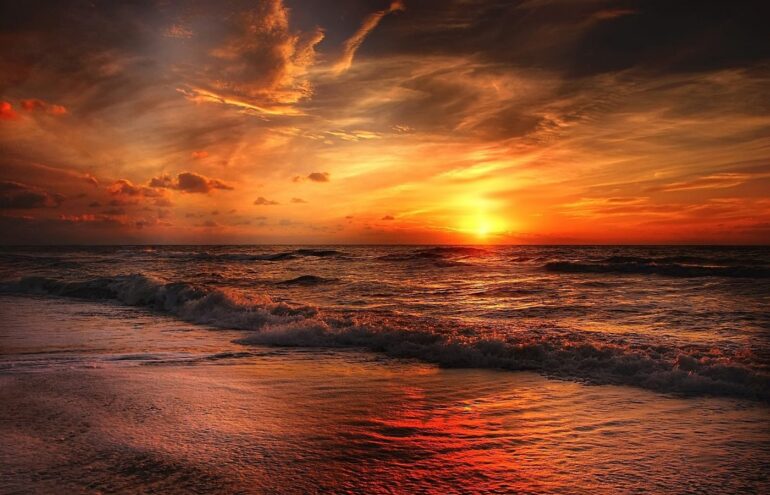

 Alicja Lenczewska
Alicja Lenczewska

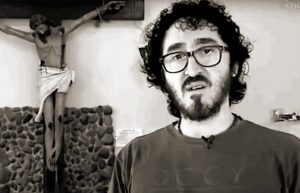
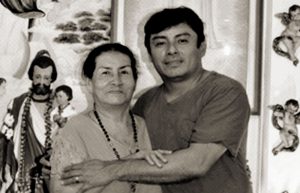
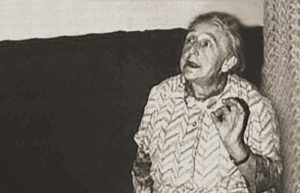 Elizabeth Kindelmann
Elizabeth Kindelmann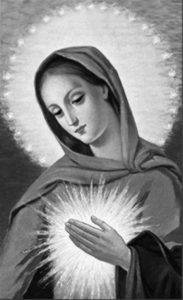 Through what became The Spiritual Diary, Jesus and Mary taught Elizabeth, and they continue to instruct the faithful in the divine art of suffering for the salvation of souls. Tasks are assigned for each day of the week, which involve prayer, fasting, and night vigils, with beautiful promises attached to them, laced with special graces for priests and the souls in purgatory. In their messages, Jesus and Mary say that The Flame of Love of the Immaculate Heart of Mary is the greatest grace given to mankind since the Incarnation. And in the not-so-distant future, her flame will engulf the entire world.
Through what became The Spiritual Diary, Jesus and Mary taught Elizabeth, and they continue to instruct the faithful in the divine art of suffering for the salvation of souls. Tasks are assigned for each day of the week, which involve prayer, fasting, and night vigils, with beautiful promises attached to them, laced with special graces for priests and the souls in purgatory. In their messages, Jesus and Mary say that The Flame of Love of the Immaculate Heart of Mary is the greatest grace given to mankind since the Incarnation. And in the not-so-distant future, her flame will engulf the entire world.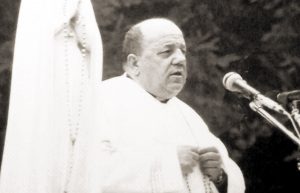 Father Stefano Gobbi
Father Stefano Gobbi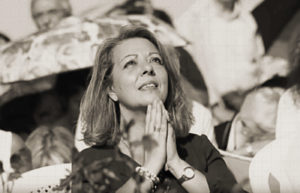 Why Gisella Cardia?
Why Gisella Cardia?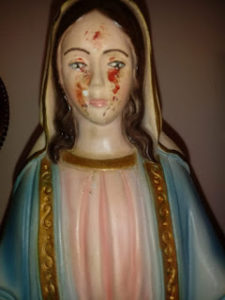 Thirdly, the messages have frequently been accompanied by visible phenomena, photographic evidence found in In Cammino con Maria, which cannot be the fruit of subjective imagination, notably the presence of the stigmata on Giselle’s body and and the appearance of crosses or religious texts in blood on Gisella’s arms. See the pictures taken from her apparition website
Thirdly, the messages have frequently been accompanied by visible phenomena, photographic evidence found in In Cammino con Maria, which cannot be the fruit of subjective imagination, notably the presence of the stigmata on Giselle’s body and and the appearance of crosses or religious texts in blood on Gisella’s arms. See the pictures taken from her apparition website 
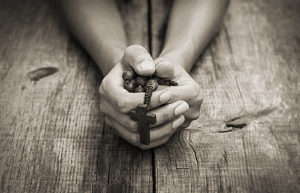 Jennifer
Jennifer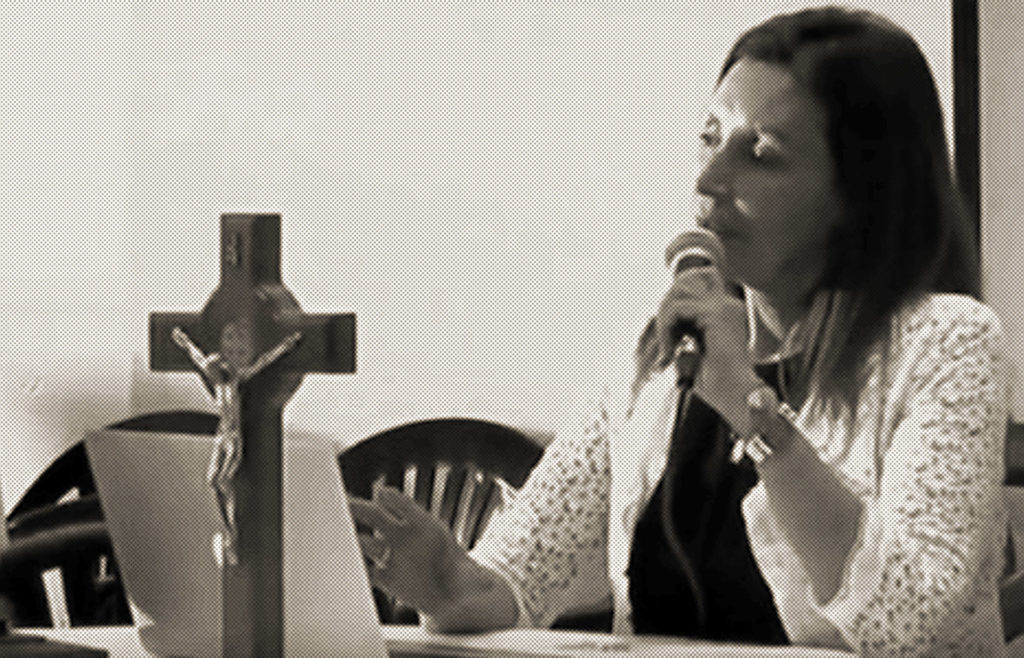
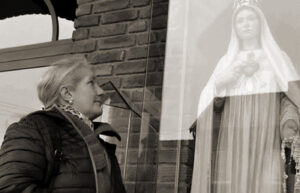 Why Manuela Strack?
Why Manuela Strack?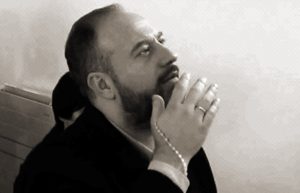

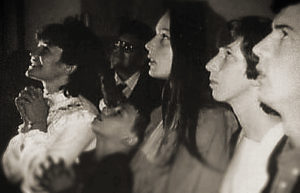 Why the Visionaries of Our Lady of Medjugorje?
Why the Visionaries of Our Lady of Medjugorje?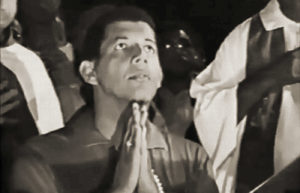 Why Pedro Regis?
Why Pedro Regis?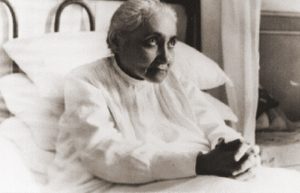 Why the Servant of God Luisa Piccarreta?
Why the Servant of God Luisa Piccarreta?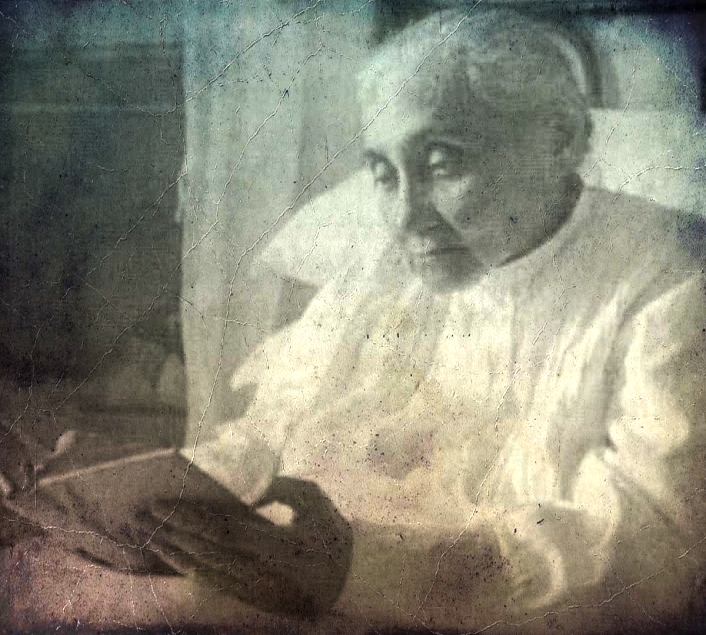 of the saints. It wasn’t until she became a “Daughter of Mary” that the nightmares finally ceased at the age of eleven. In the following year, Jesus began to speak interiorly to her especially after receiving Holy Communion. When she was thirteen, He appeared to her in a vision that she witnessed from the balcony of her home. There, in the street below, she saw a crowd and armed soldiers leading three prisoners; she recognized Jesus as one of them. When He arrived beneath her balcony, He raised his head and cried out: “Soul, help Me!” Deeply moved, Luisa offered herself from that day on as a victim soul in expiation for the sins of mankind.
of the saints. It wasn’t until she became a “Daughter of Mary” that the nightmares finally ceased at the age of eleven. In the following year, Jesus began to speak interiorly to her especially after receiving Holy Communion. When she was thirteen, He appeared to her in a vision that she witnessed from the balcony of her home. There, in the street below, she saw a crowd and armed soldiers leading three prisoners; she recognized Jesus as one of them. When He arrived beneath her balcony, He raised his head and cried out: “Soul, help Me!” Deeply moved, Luisa offered herself from that day on as a victim soul in expiation for the sins of mankind.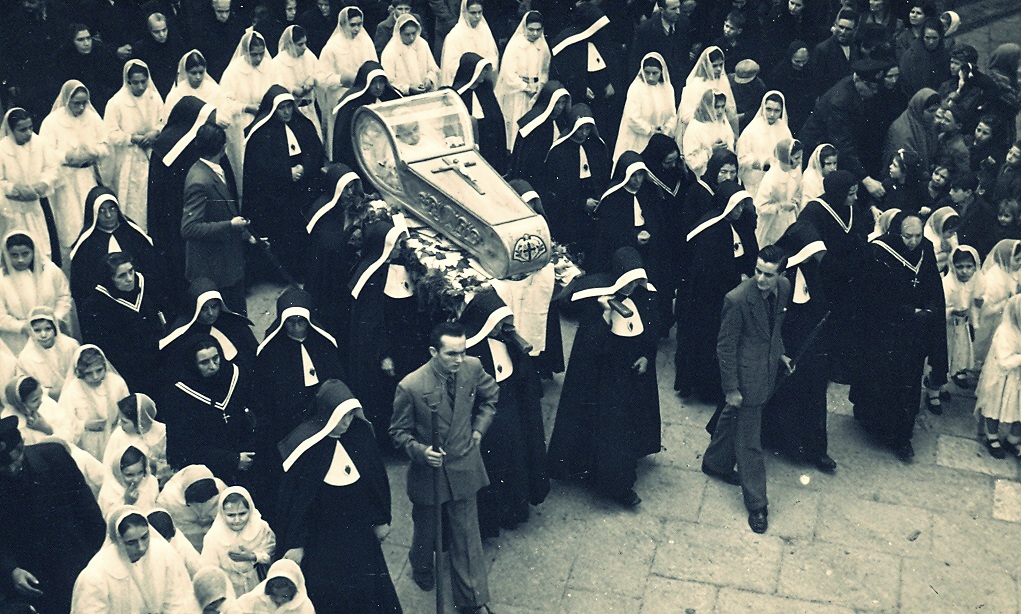 immobile, rigid-like state that appeared almost as if she were dead. It was only when a priest made the sign of the Cross over her body that Luisa regained her faculties. This remarkable mystical state persisted until her death in 1947—followed by a funeral that was no little affair. During that period in her life, she suffered no physical illness (until she succumbed to pneumonia at the end) and she never experienced bedsores, despite being confined to her little bed for sixty-four years.
immobile, rigid-like state that appeared almost as if she were dead. It was only when a priest made the sign of the Cross over her body that Luisa regained her faculties. This remarkable mystical state persisted until her death in 1947—followed by a funeral that was no little affair. During that period in her life, she suffered no physical illness (until she succumbed to pneumonia at the end) and she never experienced bedsores, despite being confined to her little bed for sixty-four years.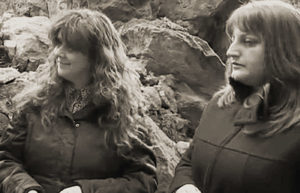 Why Simona and Angela?
Why Simona and Angela?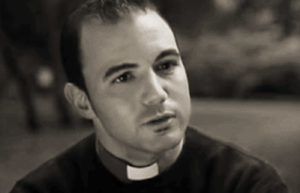
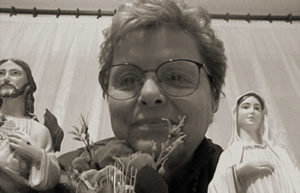 Valeria Copponi
Valeria Copponi